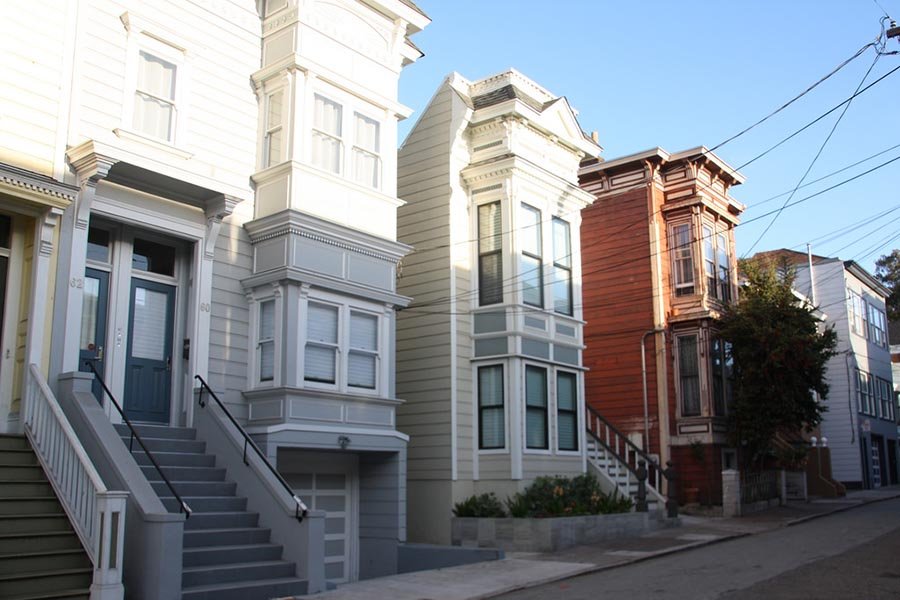City Architecture Explained
San Francisco, often celebrated for its eclectic charm and diverse neighborhoods, is a melting pot of architectural styles that reflect its rich history and cultural heritage. From Victorian-era beauties to modernist marvels, the city boasts a kaleidoscope of architectural treasures waiting to be discovered. Do you know the difference between Victorian and Edwardian architecture or which neighborhood they can be found in? WATCH: When and Why Styles Changed
Victorian Architecture
Victorian architecture flourished in San Francisco during the late 19th century, fueled by the city's rapid growth and prosperity during the Gold Rush era. Characterized by intricate detailing, ornate facades, and vibrant color schemes, Victorian homes add a whimsical charm to the city's streetscapes. Iconic examples include the Painted Ladies, a row of colorful Victorian houses overlooking Alamo Square Park, and the Haas-Lilienthal House, a meticulously preserved Victorian mansion in Pacific Heights.
San Francisco’s Victorians: Small in Number, High in History and Beauty
Edwardian Architecture
Following the Victorian era, Edwardian architecture emerged in San Francisco during the early 20th century, blending elements of Victorian design with influences from the Arts and Crafts movement. Edwardian homes are characterized by their simple yet elegant facades, bay windows, and decorative detailing. Examples of Edwardian architecture can be found throughout neighborhoods like the Haight-Ashbury district and the Mission District, adding a sense of timeless elegance to the cityscape.
Beaux-Arts Architecture
Beaux-Arts architecture, inspired by the classical designs of ancient Rome and Greece, enjoyed a resurgence in San Francisco during the early 20th century, particularly in civic and institutional buildings. Characterized by grandiose facades, elaborate ornamentation, and symmetrical layouts, Beaux-Arts buildings exude an aura of opulence and grandeur. Prominent examples include the San Francisco City Hall, with its majestic dome and neoclassical columns, and the Palace of Fine Arts, a stunning monument from the 1915 Panama-Pacific International Exposition.
Art Deco Architecture
In the 1920s and 1930s, the Art Deco movement swept across San Francisco, leaving behind a legacy of sleek, geometric buildings that epitomize the glamour and optimism of the Jazz Age. Art Deco architecture is characterized by its streamlined forms, geometric patterns, and decorative motifs inspired by technology and industry. Notable examples include the Pacific Telephone Building, with its striking zigzag facade, and the Paramount Theatre, a stunning example of Art Deco design in Oakland, just across the bay from San Francisco.
Mid-Century Modern Architecture
In the post-World War II era, San Francisco embraced the principles of Mid-Century Modern architecture, characterized by its clean lines, open floor plans, and integration with nature. Mid-Century Modern homes often feature large windows, flat or low-pitched roofs, and organic materials such as wood and stone. Examples of Mid-Century Modern architecture can be found in neighborhoods like Sea Cliff and St. Francis Wood, as well as in iconic landmarks such as the Transamerica Pyramid, a futuristic skyscraper that symbolizes the city's progressive spirit.
Twin Peaks Residence: a mid-century San Francisco 1964 house remodeled by Feldman Architecture
14 of the Best Midcentury Renovations Setting the Bar in San Francisco
Exploring San Francisco's Architectural Heritage
As you wander through the streets of San Francisco, take the time to admire the city's architectural diversity and storied past. From Victorian gems to modernist masterpieces, each building tells a unique story and contributes to the tapestry of San Francisco's built environment. Whether you're a history buff, an architecture enthusiast, or simply a curious explorer, embark on a journey through time and space.
For more information and visual examples of San Francisco's architectural styles, you can visit:




